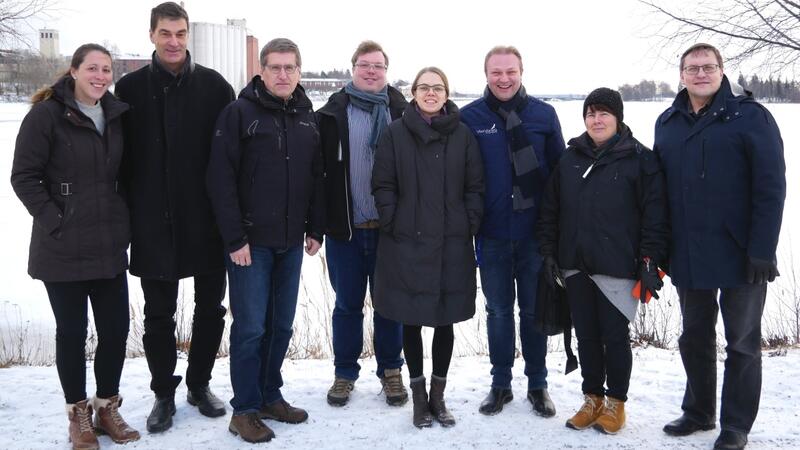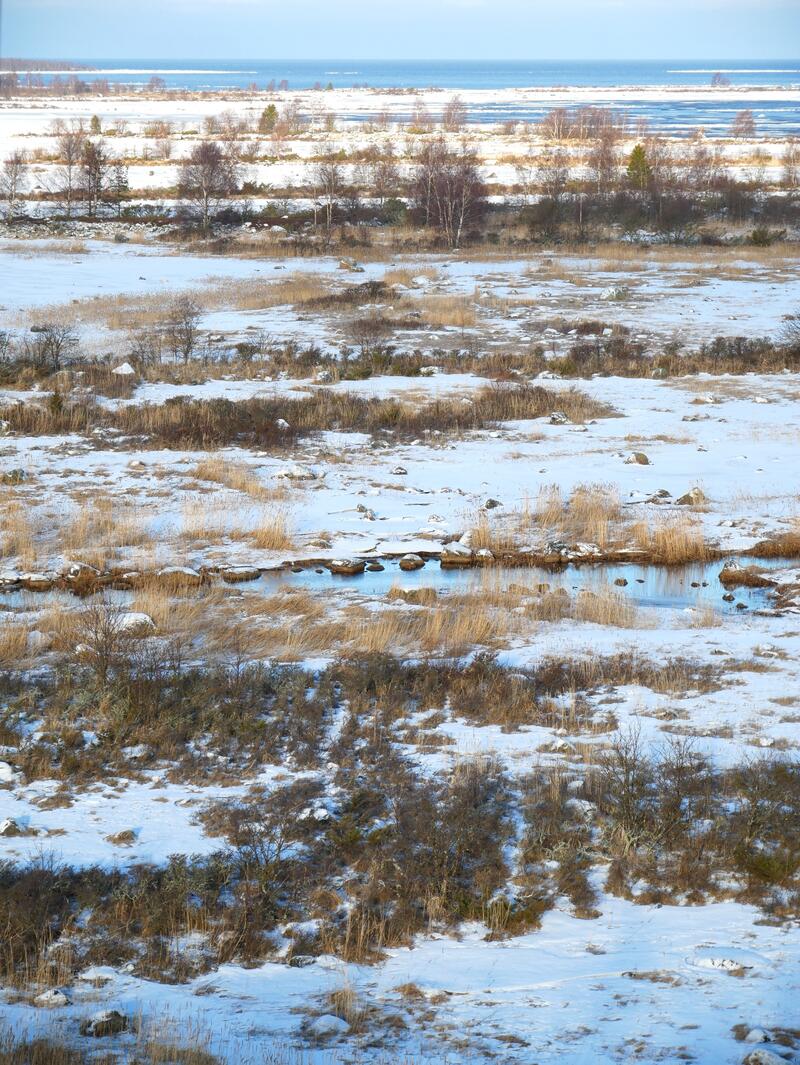Trilateral Wadden Sea Cooperation strengthens ties with High Coast/ Kvarken Archipelago World Heritage

On 5-7 February 2017 Harald Marencic, Deputy Executive Secretary and Wadden Sea World Heritage Officer at the Common Wadden Sea Secretariat (CWSS), and Annika Bostelmann, CWSS Communications Officer, met with the site managers of the High Coast/ Kvarken Archipelago World Heritage in Vaasa, Finland. During the visit the delegation explored common ground for future cooperation in the framework of the UNESCO World Heritage Marine Programme.
“The UNESCO World Heritage title does not only bring enhanced awareness to our Wadden Sea,” says Harald Marencic. “By becoming World Heritage we gained access to the vast network of all World Heritage sites and with them to a deep pool of knowledge and experience. This helps us live up to our joint responsibility to protect these sites. That is why we strive to create ties with other World Heritage sites to look for possible synergies and cooperation projects. The High Coast and Kvarken Archipelago, for instance, form a transboundary natural site that covers issues such as monitoring of geology and biodiversity as well as engaging new partners in its protection and promoting regional sustainable development for instance through sustainable tourism – just like the Wadden Sea World Heritage.”
The low-lying Kvarken Archipelago near Vaasa, Finland, and the steep High Coast on the Swedish side of the Gulf of Bothnia form a single geological entity in which post-glacial land uplift is uniquely illustrated. Pushed down by the last Ice Age glaciers 10,000 years ago, the land has been returning to its original height ever since, rising by up to 8 mm a year today. At the Kvarken Archipelago, the shallow sea and brackish water create a nursery for many salt and fresh water fish species. It also serves as a stopover for many migratory birds.
“When monitoring, both in the Wadden Sea and here in our region we look at habitat and fauna,” says Ulrika Björkmann, Senior Advisor at the Finnish site manager of the Kvarken Archipelago Metsähallitus. “Our methods, however, differ largely. That is the most interesting part of our exchange: Why are the methods different? Where can we learn from each other? For example, I was very intrigued to hear how the Wadden Sea is monitored as a transboundary entity.”
Participants of the meeting also found common ground on subjects such as World Heritage branding, sustainable tourism and the transnational character of the sites. “To me it was especially helpful to exchange views on the aspects of transboundary cooperation,” says Kari Hallantie, World Heritage Coordinator, Senior Advisor at Metsähallitus and host to the CWSS delegation. “Both our World Heritage sites stretch across national borders. This circumstance carries obstacles as well as many opportunities that one-nation sites do not have. Comparing notes helps to get impulses for new activities, but also shows that we can be proud of what we have achieved so far.”
Patrik Bylund, World Heritage Coordinator High Coast, says “We met to exchange our results, challenges and aims so that we can benefit from each other’s experiences. This is a concept to pursue further. So I fully agree with my CWSS colleagues when they say that we should build up a cooperating network between all marine world heritage sites in Europe.”
CWSS plans to further deepen the cooperation with the High Coast/ Kvarken Archipelago site. The Trilateral Wadden Sea Cooperation, with partners from Norway and the UK, has just submitted an application to the Interreg North Sea Programme. The PROWAD LINK project aims to incite small and medium-sized enterprises (SMEs) in the North Sea Region to contribute to nature protection areas such as World Heritage sites and thus unlock economic benefits. The High Coast/ Kvarken Archipelago site is currently working on a project application to the Interreg Bothnia Atlantica Programme with similar objectives. “With these projects we will be able to further enhance our exchange in the years to come and also showcase our work also internationally, potentially enabling other World Heritage sites to benefit from our experience,” resumes Marencic.

Typical landscape of the Kvarken Archipelago. CWSS/Bostelmann.
